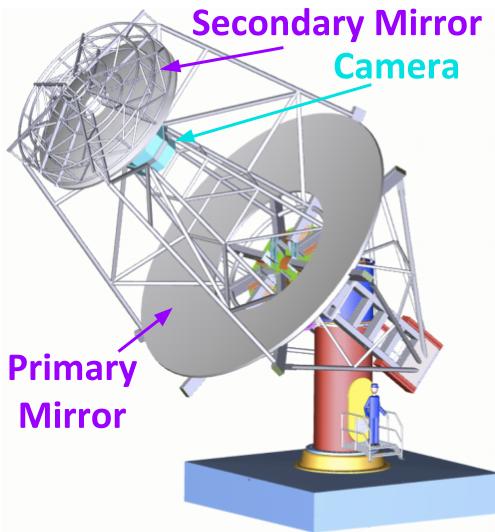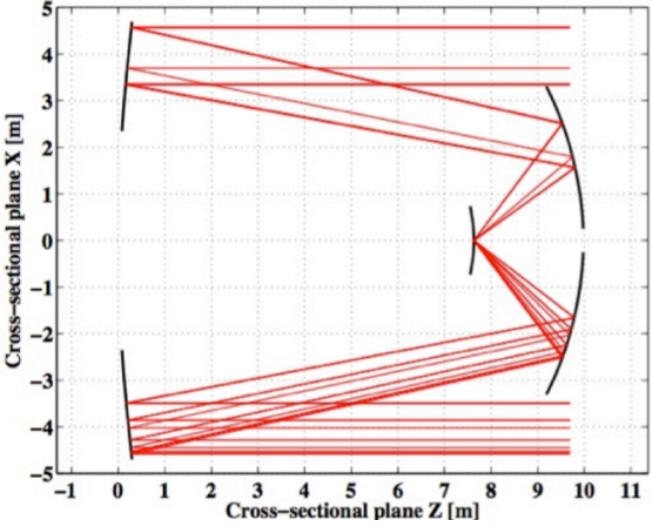Prototype Telescope
Groups around the world are currently working on prototype designs for the three different types of telescopes that will make up the final Cherenkov Telescope Array. A current unique contribution by the U.S. participants is the conception of an innovative Schwarzschild-Couder telescope (SCT) design. By using a secondary mirror to correct aberrations and reduce the plate scale, we can take advantage of compact silicon photosensors and highly integrated, low-cost readout electronics. Together, these developments achieve a wider field of view and better angular resolution than previous designs, at similar cost. This design, first developed in the U.S. for medium-sized (10 m) telescope prototypes, has now also been adopted by several European groups for small-sized (4 m) CTA telescope prototypes as well.
We are currently constructing a prototype Schwarzschild-Couder telescope (pSCT) for the core energy range of CTA (few GeV to a few TeV). The final pSCT will be build at the VERITAS site in Tuscon, AZ.

Design schematic of the pSCT showing the primary and secondary mirrors, camera, and support structures. [Meagher, K. J. "Schwarzchild-Couder Telescope for the Cherenkov Telescope Array", Proc. SPIE 9145, Ground-based and Airborne Telescopes V, 914533 (2014)]

Ray trace diagram showing how Cherenkov light from gamma-ray air showers will be focused by the primary and secondary mirrors onto the focal plane where the camera will be place. [Cameron, R. A. "Development of a mid-sized Schwarzchild-Couder Telescope for the Cherenkov Telescope Array" SLAC-PUB-15122]